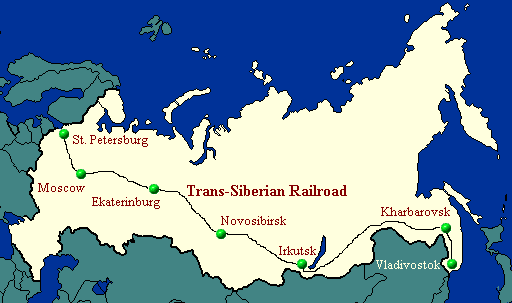The Trans-Canada Highway
/At a length of almost 5000 miles, the Trans-Canada Highway, or the TCH as it’s called here in Canada, is the world’s third longest national highway. Only two highways are longer*… Australia’s Highway 1 (9,000 miles), which circumnavigates the entire continent, and the Trans-Siberian Highway (6,000 miles), which runs from St. Petersburg on the Baltic Sea to Vladivostok on the Sea of Japan.
Australia’s Highway 1
Trans-Siberian Highway
Technically, the TCH is actually a system of roads that have parallel routes throughout the country, but the term Trans-Canada Highway generally refers to the highway that stretches from the city of Victoria on Vancouver Island in the west to St. John’s in Newfoundland in the east, and it passes through nine of the ten Canadian provinces along the way. Construction was begun in 1950, and while the highway was officially opened in 1962, it wasn’t until 1965 that the last 200 mile stretch across Newfoundland was completed. Since then, the highway has been continually improved, widened and expanded.
Parts of it are four lanes with limited access, not unlike our U.S. interstate highways. Much of it, however, is still two lane blacktop, and like our blue highways, passes through each little town along the way rather than bypassing them. Frequently, the TCH becomes the main street of the cities and towns it goes through. Because of this, it is often faster for long haul truckers to drop down into the U.S. and use our interstate system to cross the continent than to use the TCH.
The TCH is under the jurisdiction of each province rather the the federal government. Thus, highway construction, standards and maintenance are all controlled by the provinces. Even the route markers vary by province:
By the time we finish this road trip, we will have driven a good chunk of it. We drove some of the four-lane, superhighway sections, but mostly out of necessity as there weren’t many alternatives in some parts of the country. In most of the country, however, we’ve been able to find slower paced, two-lane options, which, unlike the long haul truckers, we much prefer. Marcie can almost always find something of interest along the way - the world’s largest moose, smoking pipe, truck, Coke can, or swinging bridge, are a few examples so far on this trip. We even took a 40-mile detour so we could see the world’s largest paperclip!
But we also like to stop and chat with the local folks, whether at the town’s tourist info center (or centre as it’s spelled here in Canada), a clerk at the local grocery, or someone in the next booth at the main street diner. We invariably learn something new and interesting - maybe there’s a cool little museum in town, possibly a few stories about the prohibition era bootleggers, or perhaps the location of a nice place to camp.
Eventually, I’m sure, the entire TCH will be a limited access, four+ lane highway. I’m also sure that driving its entire length will never be on our bucket list. Australia’s Highway 1, however… hmmm, something to think about.
See you next week.
*You may wonder why the Pan-American Highway, which stretches from Prudhoe Bay on the Arctic Ocean to the tip of Argentina with a length of more than 11,000 miles isn’t on the list. After all, according to the Guinness Book of World Records, it is the longest road in the world. First, it isn’t a continuous road. There is a sixty-mile break at the Darien Gap that can’t be driven through. You must load your vehicle onto a ship in Panama, have it transported to a port in Colombia, then drive back to the southern end of the Darien Gap and continue from there. And secondly, since it traverses at least 13 countries, it isn’t considered a national highway.









